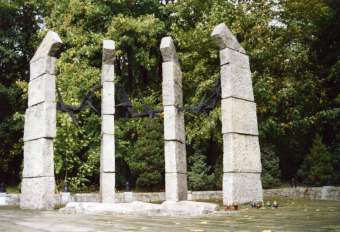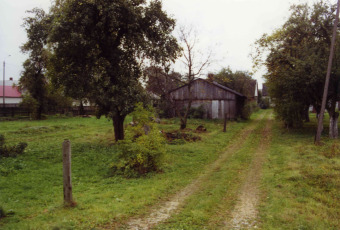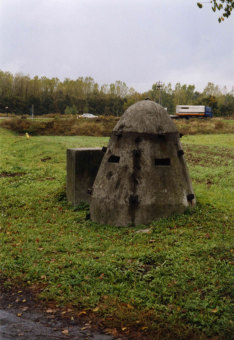Monowitz / Monowice: Factory and Camp Grounds after 1945

© Matthias Naumann

© Matthias Naumann

© Stefanie Plappert
Walther Dürrfeld and Max Faust were the last I.G. Farben employees to leave the construction site on January 23, 1945, and after that date the “the greatest ruined investment of the German Reich in the Second World War”[1] lay idle. Because the takeover by the Red Army on January 27 involved no fighting on the grounds, the plant was left almost completely unharmed. Of course, I.G. Farben employees, before their departure, had crippled parts of the factory equipment by dismantling control and communications elements and removing them from the site. Nevertheless, the factory “represented an enormous economic asset at the time of the Soviet Army’s arrival.”[2] Starting in mid-February, the Red Army mounted sentries around the plant grounds and made German prisoners of war disassemble equipment and machinery for shipment to western Siberia. There, in the town of Kemerovo, a coal-hydrogenation combine was developed. By the time the plant was handed over to the Polish authorities in late August 1945, only the pumping station for drinking water in Zaborze was in an operational state. The machine parts that still remained in Oświęcim, however, served as the basis for establishment of one of Poland’s largest chemical plants. Today the tall chimneys on the huge grounds of what now is Dwory S.A., surrounded by a wall many feet high, dominate the horizon along the highway from Cracow to Katowice. For decades, the plant was the region’s biggest employer. The wall surrounding the factory premises still contains pillars from the enclosure of the I.G. Farben construction site. On the west side of the corporation’s compound, a monument to the victims of forced labor and concentration camps between 1941 and 1945 was erected. I.G. Farben’s so-called Bereitschaftssiedlung, the housing development built for its employees, accounts even now for “a considerable share of the residental footage in Auschwitz.”[3]
Most of the prisoners in the Buna/Monowitz concentration camp were forced to go on the death march on January 18, 1945. The few left behind were freed by the Red Army on January 27 and in the following weeks either released or taken to hospitals nearby. The Polish inhabitants of the village of Monowice, who had been dislodged before the concentration camp was set up, returned to the camp’s terrain and rebuilt their houses and stables along the camp street. As construction material, they also used parts of the wooden barracks at the camp. Some of these parts are still recognizable today, as are a few concrete posts and the bunkers for the SS guards outside the camp grounds proper. As a reminder of the crimes committed there, the villagers donated funds to erect a monument with this inscription: In memory of those murdered in subcamp IV in the years 1941–1945. The residents of Monowice.
Today the International Youth Meeting Centre in Auschwitz/Oświęcim offers guided tours through the village.
(SP; transl. KL)
















